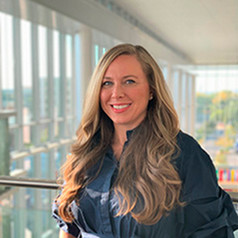Q: What led you to become a Mosaic Fellow focused on inclusion and accessibility?
A: My initial Mosaic fellowship significantly transformed my daily teaching practices by emphasizing active learning and encouraging a re-evaluation of my pedagogical methods. When I discovered that Mosaic was offering a focus on inclusion and accessibility, I was thrilled and eager to be involved a second time.
Q: What did you hope to achieve? And what did you want your students to get out of it?
A: I aimed to understand the various technology platforms we use at IU and how accessible they are for students. Recognizing that some students on campus may not have official accommodations, I am committed to making my class both accessible and a welcoming, safe environment for everyone to learn.
Q: How has it gone thus far? Has it changed the class dynamic, in terms of participation and engagement?
A: This experience has profoundly affected my teaching. I was pleasantly surprised by how receptive the students have been to the new approaches. The class dynamic has shifted significantly, with increased engagement, participation, and learning. A key change has been the impact of ensuring that all my PowerPoint presentations and Canvas pages are accessible.
Additionally, using live transcription during class has been very effective. Students have mentioned that they find it easier to learn when they can both listen to and see what is being transcribed on the projector. This simple step has made a substantial difference in making the class more inclusive and interactive.
Q: What would you recommend for learning more, getting support, and/or building community?
A: I honestly would recommend faculty consider becoming a Mosaic Fellow—or, at the very least, reaching out to their local teaching center.
For me, a key resource has been taking the time to understand and learn about the features of tools we already use at the university, like Canvas and Microsoft 365. Many of these platforms offer built-in support for accessibility, but I think more faculty members need to be aware of these features.
I believe that any faculty member would benefit from this process, whether by implementing substantial changes or making smaller, quick adjustments. In December, I plan to share with our Health Sciences faculty a few simple, immediate changes they can make to start positively impacting content accessibility for students.


